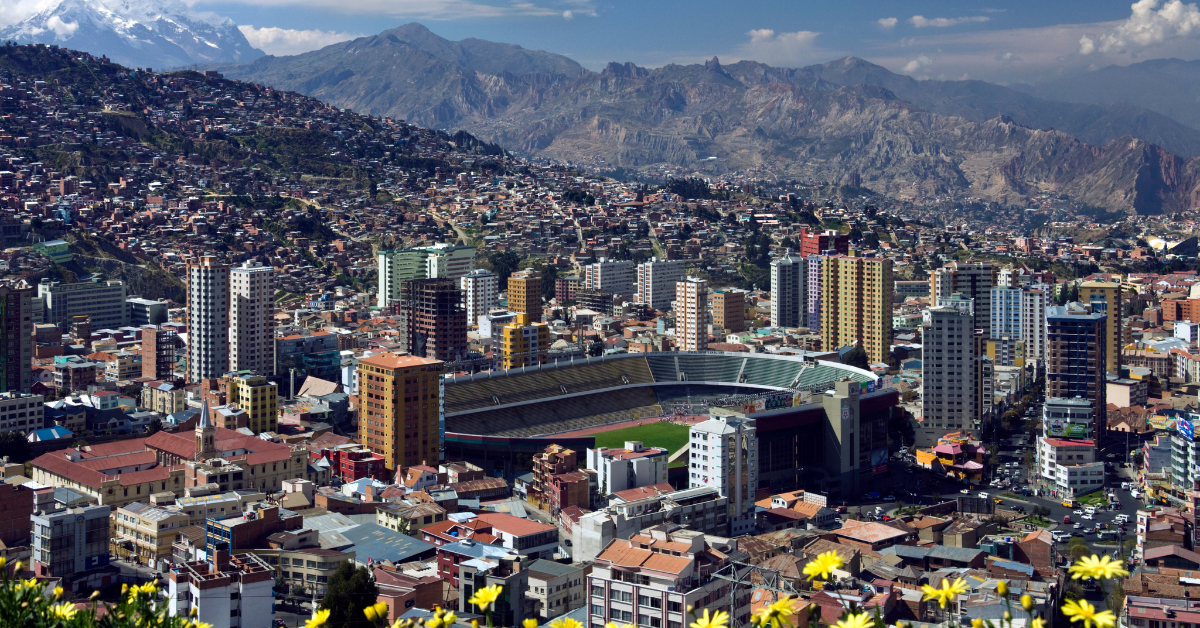La Paz, the administrative capital of Bolivia, does not have an official kanji representation in Japanese. The city’s name, meaning “peace” in Spanish, resonates with Japanese people as something both exotic and symbolic. Known for its extraordinary altitude and cultural richness, La Paz has become an image of mystery, history, and resilience in the Japanese imagination.
Does La Paz Have a Kanji Representation?
La Paz derives from the Spanish “La Paz,” and in Japanese it is commonly written in katakana. There is no official kanji representation, but when directly translated, the meaning becomes “peace.” However, this is merely a translation and not an official place name.
| Language | Representation | Meaning | Notes |
|---|---|---|---|
| Spanish | La Paz | Peace | Official name |
| Japanese | ラパス | Katakana notation | Generally used |
| Kanji (reference) | 平和 (Heiwa) | Translation | Non-official, rarely used |
While it is possible to replace La Paz with the kanji “平和,” the uniqueness of the place name is lost, and thus it is not used in everyday practice.
The Image Japanese People Have of La Paz
La Paz is located at an altitude of over 3,600 meters, making it one of the highest capitals in the world. This geographical uniqueness strongly shapes the Japanese perception of the city as a “city in the sky.”
It is also a city where Andean culture thrives, with colorful clothing, traditional festivals, and local markets, all of which stand out in contrast to Japanese urban life. Additionally, as the center of Bolivia’s political activities, Japanese people often imagine La Paz as a place of social energy and demonstrations.
As a gateway to tourism, La Paz is also familiar to Japanese travelers heading to world-famous destinations such as the Uyuni Salt Flats or Lake Titicaca.
| Image | Characteristics | Japanese Perception |
|---|---|---|
| City in the sky | High altitude, thin air | A city in a special environment |
| Cultural center | Andean traditions and festivals | A symbol of exotic culture |
| Political hub | Frequent demonstrations and rallies | A city full of energy |
| Travel gateway | Starting point for Uyuni and Titicaca | A base for exploration |
La Paz and Sports Culture
When it comes to La Paz, sports, especially soccer, are essential. The Estadio Hernando Siles, located at 3,600 meters, is one of the most famous stadiums in the world, often referred to as a “fortress” or “cursed ground” due to its harsh conditions. Thin air makes playing extremely difficult, and even world-class teams struggle there.
This unique environment is well-known in Japan, where soccer fans often talk about “high-altitude matches in La Paz.” Through sports news, La Paz becomes more than just a faraway capital, but a city Japanese people recognize in a global sporting context.
| Sports Aspect | Features | Japanese Impression |
|---|---|---|
| Soccer | Matches at high altitude are tough | Known as a fortress |
| Local clubs | Deep ties to the community | A source of local pride |
| International matches | Foreign teams struggle in La Paz | Widely reported in sports news |
Daily Life and Culture in La Paz
Beyond politics and tourism, La Paz also has a distinct lifestyle and culture. The market culture leaves a strong impression on Japanese visitors.
For instance, the “Witches’ Market” sells herbs and ritual goods, creating a unique mix of tradition and modernity. The city’s steep terrain means residents are constantly walking uphill, giving La Paz an urban landscape unlike that of Japan.
Food culture is also shaped by altitude. Potatoes and quinoa, both suited to highland farming, dominate daily meals. Interestingly, quinoa, now popular in Japan as a health food, has long been a staple in La Paz.
| Cultural Aspect | Features | Japanese Impression |
|---|---|---|
| Market culture | Witches’ Market and unique trades | Feels like another world |
| Urban landscape | Many steep slopes, difficult mobility | Distinctive highland scenery |
| Food culture | Potatoes and quinoa dominate | Healthy and appealing |
Conclusion
La Paz does not have an official kanji representation and is generally written in katakana in Japanese. While it can be translated as “peace,” this is merely a symbolic interpretation.
To Japanese people, La Paz is a “city in the sky” spread across the Andes, a place where culture and politics intersect. It is also internationally famous as a soccer battleground, leaving a strong impression through both tourism and global sports news.
In short, La Paz is not just a distant foreign capital. With its culture, history, sports, and tourism all intertwined, it remains a memorable and unique city in the Japanese imagination.






